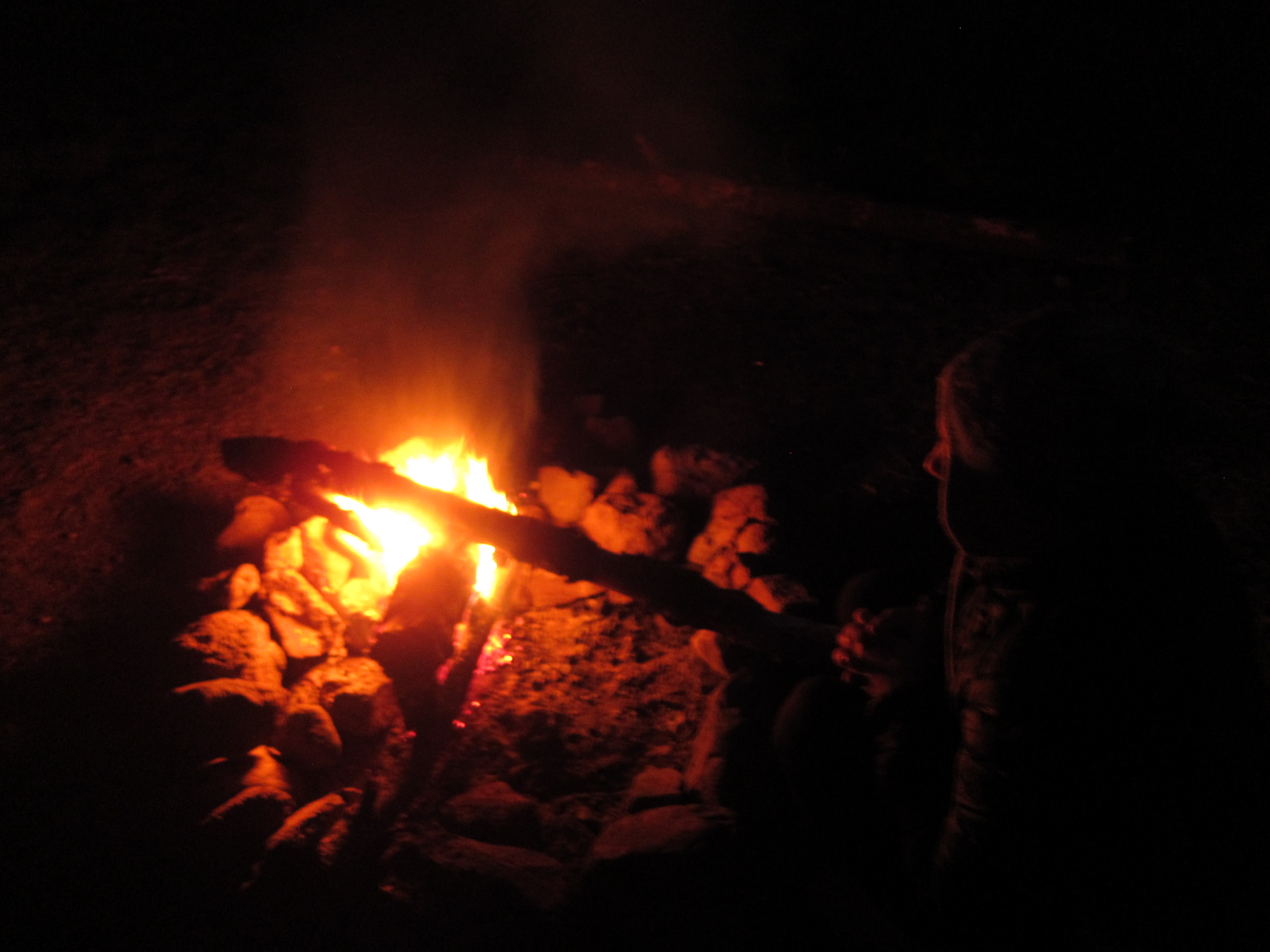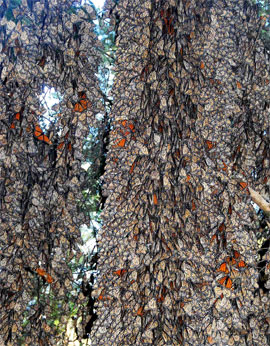I grew up near a fortress built during the French and Indian War and used to love historical reenacting, but I eventually quit. In the eyes of dominant reenacting culture, period-correct portrayal of a frontier woman meant that my male friends would be throwing tomahawks and shooting muzzleloaders, and I’d be mending bodices and cooking over an open fire.

The next time you inhale too much smoke while roasting marshmallows, ask yourself what it would be like to have that crud in your lungs every day. (Photo by SJK)
While I had the luxury of eschewing the cooking technology of the colonial period, almost half of world’s families still prepare their meals over open flame. And just as in early America, men are often out and about, while women and young children stay in the home where they continually inhale smoke.
This October, a Science paper from authors at the National Institutes of Health (NIH) named home pollution from open cooking fires the world’s leading cause of environmental death. Killing nearly 2 million people annually, indoor air pollution is more deadly than malaria, according to the World Health Organization. Most of the deaths come from acute lower respiratory infections in children under five and adult deaths from chronic obstructive pulmonary disease, which includes chronic bronchitis and emphysema.
I’ve recently become more aware of this issue because I’m writing a story about the Berkeley-based Darfur Stoves Project. Just after I started talking to people involved with the Darfur Stoves Project, I interviewed Bill Toone, the executive director of the San Diego-based ECOLIFE Foundation, about monarch butterflies. Both organizations distribute fuel-efficient cooking stoves in ways that are culturally specific, address the extreme logistical challenges of distributing a new technologies in poor countries, and attempt to create market demand for the stoves. The NIH authors list all of those things as barriers to stove adoption by families.
These projects demonstrate how food—and its preparation—directly touch individual quality of life, but then ripple into our local environments and, in the case of carbon emissions, the global environment.
As Toone said: “This is one of those wonderful crossover spots where we can help the environment, help a family and help ourselves in the sense that these cooking practices have an impact on our climate.
Since 2004, Toone and ECOLIFE have been working with communities in and near Central Mexico’s Monarch Butterfly Biosphere Reserve to distribute fuel-efficient cooking stoves. Deforestation over the decades–both by illegal logging cartels and locals, who need firewood for cooking—has fragmented the butterflies’ unique Oyamel fir habitat and put the migration at risk. ECOLIFE recognized that communities could reduce pressure on the habitat that they share with the butterfly by using less firewood to prepare their meals.
Toone’s approach to biological conservation comes from his conviction that people need to have adequate food, water and shelter before they can care for other things. “The most effective way we’re going to enact conservation on the planet, is that conservation is how we ensure our healthy survival into the future,” said Toone. “It’s really about us.”

When ECOLIFE tried to save money by removing the tile indicating that the Lorena cookstove is a friend of the butterflies, new stove users wondered what happened to the tile, and ECOLIFE restored the important symbol of the community’s connection to the environment. Photo credit: ECOLIFE Foundation
The Darfur Stoves Project is another stoves group working for human and environmental health. In 2006, the U.S. Agency for International Development approached Ashok Gadgil, a

The Berkeley-Darfur Stove is manufactured in Mumbai, assembled in Darfur, and was designed in tested by Lawrence-Berkeley labs engineers with constant input from the women of Darfur. Photo credit: LBNL Cookstoves Project
physicist at Lawrence Berkeley National Laboratories, to help because militiamen were raping Darfuri women as they left refugee camps to search for firewood. A fuel-efficient stove would cut down on wood-gathering trips and women’s exposure to violence.
The stove that Gadgil and his team developed is the product of a long, iterative process between engineering and culture. The stove has been successful because it incorporated many design suggestions from Darfuri women. Now that there are few trees left to gather around the refugee camps, many women buy firewood rather than collect it, and the stove saves them money and time.
Andree Sosler, the executive director of the Darfur Stoves Project, told me in an interview that will appear elsewhere, about their most recent work in marketing the stoves and providing microloans so that women may purchase them. Like the NIH paper, she emphasized the importance of developing a market for stoves because it helps make the product more consumer-driven and sustains its distribution.
Though Toone is a conservation biologist who once worked on the California condor reintroduction, and Ashok Gadgil is a physicist and engineer, I heard a similar refrain from both of them. They weren’t satisfied with just working with animals or making gadgets, they wanted to see real changes in the quality of life of individuals.
Gadgil, a master of developing technology for people who are often overlooked by traditional research and development, summed up his motivations in an interview earlier this fall: “How can we say at the end of the day we made the world a little better. Do you say: ‘I want to publish one more paper’? No!”








Comments are closed.